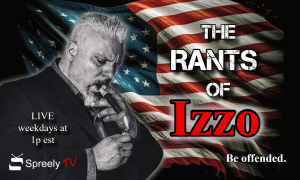Driving under the influence (DUI) remains one of the most pervasive and dangerous criminal behaviors in the United States. Despite countless arrests, campaigns, and legal deterrents, the epidemic persists, claiming lives and causing untold destruction. The grim reality is that criminal arrests by police do not seem to deter repeat offenses or eliminate this behavior.
VIDEO
The Shocking Scope of DUI in America The statistics are harrowing. According to the National Highway Traffic Safety Administration (NHTSA), nearly 30% of all traffic fatalities in 2021 involved alcohol-impaired drivers, equating to over 11,600 deaths. This marks a 14% increase from the previous year, highlighting a worrying trend of regression despite decades of efforts to curb drunk driving.
Even more alarming, the Centers for Disease Control and Prevention (CDC) estimates that drivers make about 121 million alcohol-impaired trips annually , yet only 1% result in arrests. This means millions of intoxicated drivers evade detection, putting countless lives at risk daily.
DUI Arrests: A Revolving Door Law enforcement agencies across the nation apprehend more than 1 million drivers annually for DUI-related offenses. However, these arrests have little impact on reducing recidivism. Studies reveal that approximately one-third of all DUI arrests are repeat offenders , demonstrating that existing legal consequences fail to rehabilitate or deter individuals from reoffending.
For instance, a study conducted by the National Institute on Alcohol Abuse and Alcoholism (NIAAA) found that 50% of drivers with multiple DUI convictions continued to drink heavily, indicating that arrest alone does little to address the root cause of the problem: addiction and behavioral patterns.
The Costs of DUI: Lives and Dollars Beyond the devastating human toll, the financial burden of DUI incidents is astronomical. The NHTSA reports that alcohol-impaired crashes cost the United States approximately $44 billion annually in medical expenses, legal costs, and property damage.
Moreover, the trauma inflicted on victims and families is immeasurable. Survivors often endure life-altering injuries, while families grapple with the loss of loved ones. Yet, despite the carnage, DUIs continue to plague American roads.
Why Arrests Are Not Enough The persistence of DUI behavior suggests a systemic failure in addressing the problem. While arrests are necessary, they are not sufficient to deter individuals from reoffending. Here’s why:
Minimal Consequences Addiction as the Root Cause Lack of Public Awareness Inconsistent Enforcement
The Need for Reform The current approach to combating DUI must evolve to address the root causes and prevent repeat offenses. A multi-faceted strategy is necessary to turn the tide:
Stronger Penalties : Implementing harsher consequences for DUI offenses, such as longer license suspensions or mandatory jail time for repeat offenders, could serve as a more effective deterrent.Mandatory Treatment Programs : Courts should require offenders to participate in rehabilitation programs that address alcohol dependency. States like Minnesota have seen success with initiatives that combine treatment with strict monitoring.Technological Solutions : Advances in technology, such as ignition interlock devices, can prevent offenders from starting their vehicles if they are impaired. Expanding the use of such devices could save lives.Enhanced Public Education : Comprehensive education campaigns that highlight the dangers and consequences of drunk driving must be amplified to instill a culture of zero tolerance.Uniform Enforcement : Nationwide implementation of DUI checkpoints and saturation patrols would create a consistent enforcement presence, reducing the opportunities for impaired drivers to go undetected.
Conclusion The epidemic of DUI in the United States is a stark reminder of the limits of our current justice system. While police arrests play a critical role, they alone cannot deter this widespread criminal behavior. Addressing the root causes of DUIs—alcohol addiction, lenient penalties, and societal attitudes—requires bold reforms and a collective commitment to change.
The question remains: how many more lives must be lost before we take meaningful action? The time to act is now, not just with arrests, but with a comprehensive strategy that prioritizes prevention, rehabilitation, and accountability. Lives depend on it.



